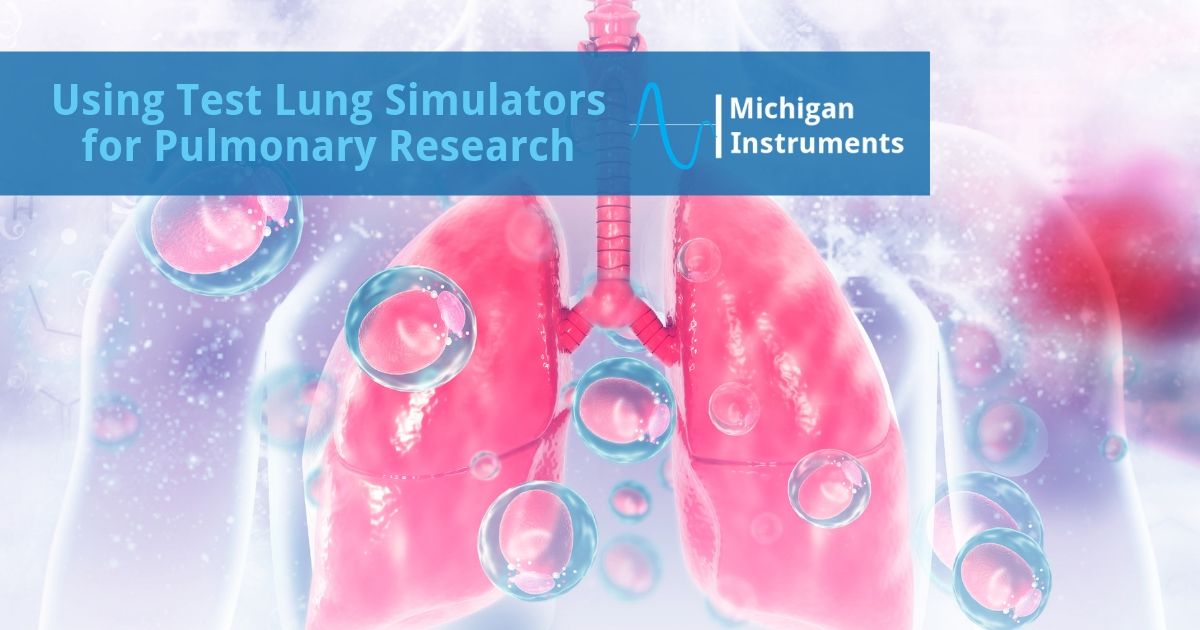Time after time, test lung simulators by Michigan Instruments are used for clinical research. These simulators have helped researchers develop new respiratory care devices and treatments that have improved the lives of patients with a wide variety of respiratory conditions. These devices were created with respiratory researchers in mind, and provide realistic simulation capabilities, various setup options, accuracy, reliability, and durability.
Our instrumented units include PneuView Software, which provides a numeric and graphical display of ventilation parameters in real time, allow research professionals with access to real-time data collection for documentation or later review and analysis.
Since our lung simulators are fully calibrated and available in single or dual-lung models for adults and an adult/infant model, researchers are able to simulate hundreds of healthy and diseased lung conditions for a range of patient scenarios. They can also use our breath simulation module to evaluate the performance of various techniques and apparatus that provide ventilation and oxygenation support of spontaneous breathing adult patients.
Michigan Instruments is referenced in various articles by The National Center for Biotechnology Information (NCBI), which is a part of the United States National Library of Medicine. Its main mission is to develop new information technologies to aid in the understanding of fundamental molecular and genetic processes that control health and disease. Let’s take a closer look at how Michigan Instruments was referenced in these articles.
Comparing Bag-Valve-Mask Hand-Sealing Techniques in a Simulated Model
Bag-valve-mask ventilation continues to be an important part of airway management. A study using a Michigan Instruments Training Test Lung was performed to compare the efficacy of the 1-handed, 2-handed, and modified 2-handed bag-valve-mask technique.
It helped identify large differences in mask performance and showed researchers that with continued refinement, the availability of reliable benchtop methods will likely aid in the development and selection of patient interfaces for delivery of helium/oxygen and other medical gases.
Studying the Efficiency and Safety of the Manual Hyperinflation Maneuver as a Secretion Clearance Technique
Manual hyperinflation (MH) is a technique that is alleged to promote secretion clearance and re-expand areas of atelectasis to improve lung compliance and oxygenation in patients on mechanical ventilation. A study was conducted to evaluate the efficiency and safety of the MH technique as a way to remove pulmonary secretions.
Eight respiratory therapists used a self-inflating manual resuscitator on a lung model to perform MH as if to remove secretions, under two conditions: as routinely applied during their clinical practice and after receiving verbal instructions based on expert recommendations.
In both conditions, normal lung function, restrictive lung disease, and obstructive lung disease were simulated. Test lungs by Michigan Instruments were used during this study, which concluded that the MH technique was often performed in a way that did not favor the removal of pulmonary secretions, even after instruction.
Continuing Support for Respiratory Care Researchers
Michigan Instruments continues to maintain relationships with our clients and users, and we continue to serve as a trusted partner to researchers who would like to develop new treatments and devices that improve the care and lives of patients around the world.
If you have a question about a research application or would like to share your articles with us, please contact us today.




